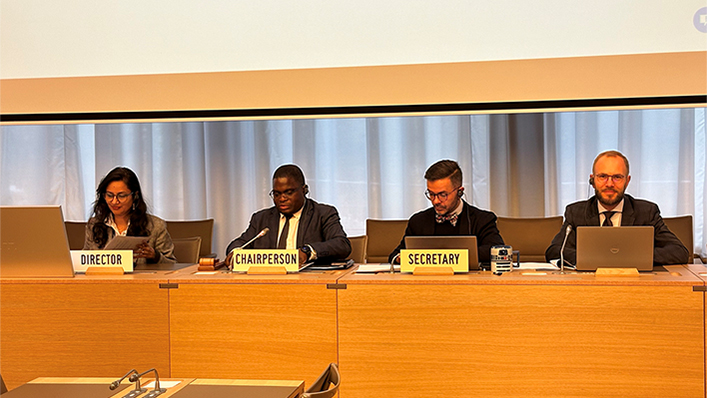
The report, which was adopted by the Committee on 24 November, will be forwarded to a 14-15 December General Council meeting for consideration. It calls on the Committee to continue its work to ensure that preferential rules of origin applicable to imports from LDCs are transparent and simple and contribute to facilitating market access, in line with the Uruguay Round Decision on Measures in Favour of Least Developed Countries as well as the subsequent 2013 Bali and 2015 Nairobi Decisions on Preferential Rules of Origin for LDCs.
“Members will continue and, to the extent possible, intensify their work on identifying and where possible, agreeing on best practices on preferential rules of origin and related administrative requirements,” the report adds.
The chair of the Committee, Mr Elia Mtweve of Tanzania, described the report as an “important milestone” which showed the readiness of WTO members to address the challenges faced by LDCs. He also underlined that work in the Committee would continue, including with the discussion of a workplan to intensify, to the extent possible, the work of the Committee on preferential rules of origin.
The report outlines the work conducted by the Committee from 2017 to October 2023 on preferential rules of origin, highlighting the main issues discussed and the state of play reached on the main areas of this work. It also underlines lessons learned and discusses practices with respect to the use of preferential rules of origin. In addition, it provides guidance for the future work of the Committee to better identify possible best practices and lessons learned.
The report notes that the Committee has made substantial progress in terms of the availability of information regarding preferential rules of origin applied to LDCs in the context of non-reciprocal trade preferences as well as improving the availability of data on preferential tariffs and imports. In regard to the latter, however, “significant gaps remain” that impact the ability of the WTO Secretariat to conduct a comprehensive analysis of current rates of preference utilization.
One significant gap that has emerged concerns the availability of information on imports entering under “other” preferential schemes, the report notes, whether these be regional trade agreements, other preferential arrangements, or special regimes which offer tariff concessions. “Such data is needed for a full analysis of trade between LDCs and preference-granting Members.”
With regards to the utilization of preferential rules of origin by LDC traders, members in the Committee have agreed to modalities for the calculation of utilization rates. They considered several notes, prepared by the LDC Group of WTO members, one preference-granting member and the WTO Secretariat, describing patterns of utilization of trade preferences by LDCs.
An examination of import statistics for 2015-2019 indicates that utilization of preferences can be improved in all preferential arrangements, the report notes. It also suggests that utilization rates vary significantly across different preference-granting members. Even in cases of overall high levels of utilization, there might also be “pockets”of non-utilization in certain sectors, and some preferential arrangements show a low or very low level of utilization.
In addition, preference utilization rates show significant annual variations. Preliminary analysis also indicates that trade preferences tend to be used less when trade values are low and used more when trade values are high.
“While the discussions in the (Committee) were useful to better understand the impact of rules of origin on preference utilization, they also highlighted that further work is needed in this area so that Members can have a more accurate picture about the utilization of trade preferences by LDCs,” the report states.
The report also highlights the Committee’s work with regards to requirements for the assessment of sufficient or substantial transformation when determining a product’s country of origin, as well as the issue of cumulation. The report also highlights work on documentary requirements related to preferential rules of origin for LDCs, including proof of origin, trade facilitation measures for small consignments, and documentary evidence of direct consignment.
The full “Report of the Committee on Rules of Origin to the General Council on Preferential Rules of Origin for Least Developed Countries” is available here.
Background
Rules of origin are the criteria needed to determine the national origin of a product. Those members granting preferences to LDC imports often condition the benefits on the imports meeting minimum “LDC content” as set out under their rules of origin schemes. The 2013 Bali and 2015 Nairobi Decisions set out a set of multilaterally agreed guidelines to help make it easier for LDC exports to qualify for preferential market access.
A Rules of Origin Facilitator allows firms to take fuller advantages of benefits under free trade agreements and preferential trade arrangements by helping them comply with product rules of origin requirements.
Further information on the WTO’s work regarding rules of origin can be found at www.wto.org/origin.
Share
Reach us to explore global export and import deals